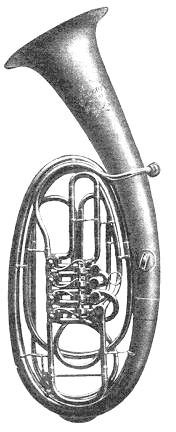 The Wagner tuba had been taken up by a select number of Wagner’s heirs, its literature and scope had continued to grow, a healthy number of manufacturers now produced them, and military contracts seemed a guarantee for a prosperous future. The First World War, however, swept away most of the military bands as well as the last vestiges of the Romantic inheritance. The question now was, would the Wagner tuba find a place in the modern musical landscape? Would ‘modern’ composers use the instrument at all, and if so, how?
The Wagner tuba had been taken up by a select number of Wagner’s heirs, its literature and scope had continued to grow, a healthy number of manufacturers now produced them, and military contracts seemed a guarantee for a prosperous future. The First World War, however, swept away most of the military bands as well as the last vestiges of the Romantic inheritance. The question now was, would the Wagner tuba find a place in the modern musical landscape? Would ‘modern’ composers use the instrument at all, and if so, how?
In the event, the modern titans only used the Wagner tuba sparingly. Schoenberg’s sole use of the instrument was in ‘Gurre-Lieder’ (1900-1911) which included ten horns in F with the last four doubling on Wagner tubas (tenor tubas in E-flat and bass tubas in B-flat, the only departure being the seating arrangements: seven and eight in B-flat, and nine and ten in F).
Stravinsky was early exposed to the music of Wagner, Bruckner and Strauss, but one questions his familiarity with the Wagner tuba itself. He used them in a way uniquely his own in ‘The Firebird’ (1910). ‘The Rite of Spring’ (1911-13) was Stravinsky’s second and final work for the instrument. He didn’t indicate which octave he required for the B-flat tenor tuba parts, and the controversy continues to this day.
Bela Bartok used two B-flat tenor tubas in ‘Kossuth’ (1903) and ‘The Miraculous Mandarin’ Op. 19 (1918-19). In Gustav Holst’s ‘The Planets’ (1914-16), the one tenor tuba in B-flat is meant to be played by the euphonium, but it is played in Vienna on the Wagner tuba. Likewise Leos Janacek’s ‘Sokol Fanfare’ from his ‘Sinfonietta’, and the ‘Capriccio’ (1926), whose scores indicate tenor tubas, employ euphoniums in Prague and Wagner tubas in Vienna!
Composing for the Wagner tuba slowed down after the First World War and its repertoire languished for forty years. Exceptions, however, were Stokowski’s orchestral arrangement of Bach’s Passacaglia in C minor BWV 582 which uses a quartet of tenor and bass tubas, and Varese’s ‘Arcana’ (1927). The solo tuba in Ravel’s orchestration of ‘Pictures at an Exhibition’ (Bydlo) is sometimes played on the Wagner tuba. Yet all of these are simply cameo appearances.
Danish composer Rued Langaard (1893-1952) used a quartet of Wagner tubas in his First Symphony (1908-11). When the work was premiered in Berlin, the Wagner tuba parts were played by horns to save money. Understandably, Langaard never again wrote for Wagner tubas!
As the century wore on, many manufacturers went out of business and closed their doors. Even the oldest extant maker of instruments, C.W. Moritz, shut down operations in 1955. The Wagner tuba was in danger of becoming a museum piece.
Next Essay – Revival